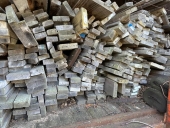

 2
2




Understanding This Tool:
The Tree Benefit Calculator allows anyone to make a simple estimation of the benefits individual street-side trees provide. This tool is based on i-Tree’s street tree assessment tool called STREETS. With inputs of location, species and tree size, users will get an understanding of the environmental and economic value trees provide on an annual basis.
The Tree Benefit Calculator is intended to be simple and accessible. As such, this tool should be considered a starting point for understanding trees’ value in the community, rather than a scientific accounting of precise values. For more detailed information on urban and community forest assessments, visit the i-Tree website.
QuickBooks set up and Bookkeeping for Small Businesses and Farms - jocelyncampbell.com
 1
1














Miles Flansburg wrote:That is so cool ! I have lots of aspen on my ten acres so I plugged in an average 8 inch aspen and wow my whole forest is saving millions !
QuickBooks set up and Bookkeeping for Small Businesses and Farms - jocelyncampbell.com
 1
1











 1
1




Regan Dixon wrote:You realize that you just "made me" plug in every tree on the property.

I find it an odd concept to put a dollar value on the services provided by trees, but in that context, it's interesting that the trees that are valued the highest, are the wild ones of least direct value to me as a hungry human; and the ones that I bought to give fruit, have least value. Note to Paul, though: I do feel somewhat vindicated for honouring the granddaddy Doug firs on the property. Mind you, I am grateful to any tree that sees fit to grow here, and do not value them less (though the survey seems to) for growing in "unused space", surrounded by forest.
Yay trees!
QuickBooks set up and Bookkeeping for Small Businesses and Farms - jocelyncampbell.com
 2
2





"It might have been fun to like, scoop up a little bit of that moose poop that we saw yesterday and... and uh, put that in.... just.... just so we know." - Paul W.




 1
1








Regan Dixon wrote: In far too many new developments I've seen, the scrub alder and cottonwoods have been razed, and one or two token, well-mannered "boulevard trees" planted, and then there's nothing but a sea of roofs with no relief.
Idle dreamer

|
pizza for tiny ad? tiny ad? Did you order a pizza?
The new permaculture playing cards kickstarter is now live!
https://www.kickstarter.com/projects/paulwheaton/garden-cards
|






